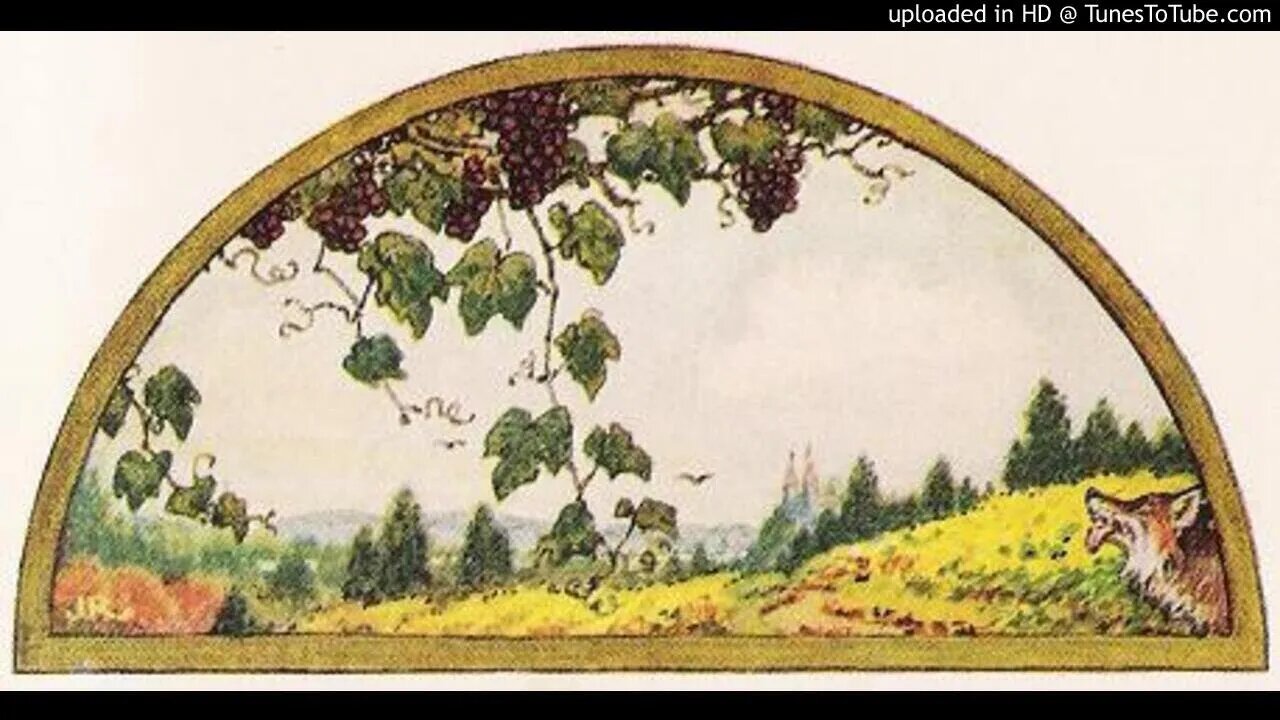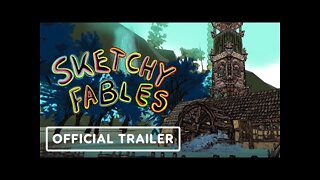Premium Only Content

Aesop's Fables - Fox and the Grapes
A collection of Aesop's fables for children from the classic American book illustrated by Milo Winter. Read along and see the illustrations at: http://www.gutenberg.org/ebooks/19994
The Wolf and the Kid
The Tortoise and the Ducks
The Young Crab and His Mother
The Frogs and the Ox
The Dog, The Cock and the Fox
Belling the Cat
The Eagle and the Jackdaw
The Boy and the Filberts
Hercules and the Wagoner
The Kid and the Wolf
The Town Mouse and the Country Mouse
The Fox and the Grapes
Aesop's Fables, or the Aesopica, is a collection of fables credited to Aesop, a slave and storyteller believed to have lived in ancient Greece between 620 and 564 BCE. Of diverse origins, the stories associated with his name have descended to modern times through a number of sources and continue to be reinterpreted in different verbal registers and in popular as well as artistic media.
The fables originally belonged to the oral tradition and were not collected for some three centuries after Aesop's death. By that time a variety of other stories, jokes and proverbs were being ascribed to him, although some of that material was from sources earlier than him or came from beyond the Greek cultural sphere. The process of inclusion has continued until the present, with some of the fables unrecorded before the Late Middle Ages and others arriving from outside Europe. The process is continuous and new stories are still being added to the Aesop corpus, even when they are demonstrably more recent work and sometimes from known authors.
Manuscripts in Latin and Greek were important avenues of transmission, although poetical treatments in European vernaculars eventually formed another. On the arrival of printing, collections of Aesop's fables were among the earliest books in a variety of languages. Through the means of later collections, and translations or adaptations of them, Aesop's reputation as a fabulist was transmitted throughout the world.
Initially the fables were addressed to adults and covered religious, social and political themes. They were also put to use as ethical guides and from the Renaissance onwards were particularly used for the education of children. Their ethical dimension was reinforced in the adult world through depiction in sculpture, painting and other illustrative means, as well as adaptation to drama and song. In addition, there have been reinterpretations of the meaning of fables and changes in emphasis over time.
Do you enjoy the variety of Chesterton Radio shows? Please consider supporting us to help us grow.
http://Patreon.com/ChestertonRadio Join our family and access Patron-only podcasts
Enjoy our shows anytime!
http://Listen.ChestertonRadio.com
http://Orthodoxy.ChestertonRadio.com
http://EverlastingMan.ChestertonRadio.com
http://Eugenics.ChestertonRadio.com
http://Distributism.ChestertonRadio.com
http://Gunsmoke.ChestertonRadio.com
http://AveMariaHour.ChestertonRadio.com
http://Stations.ChestertonRadio.com
http://GreatestStoryEverTold.ChestertonRadio
http://JackBenny.ChestertonRadio.com
http://ClassicFilms.ChestertonRadio.com
http://GrandOleOpry.ChestertonRadio.com
http://NationalBarnDance.ChestertonRadio.com
http://LesMiserables.ChestertonRadio.com
http://BraveNewWorld.ChestertonRadio.com
http://1984.ChestertonRadio.com
http://D-Day.ChestertonRadio.com
http://RerumNovarum.ChestertonRadio.com
http://Stations.ChestertonRadio.com
http://Latin.ChestertonRadio.com
http://TheseAreOurMen.ChestertonRadio.com
http://ArchitectureCodex.ChestertonRadio.com
http://Superman.ChestertonRadio.com
http://GIJive.ChestertonRadio.com
http://NocturneNightflight.ChestertonRadio.com
-
 8:33:13
8:33:13
Chesterton Radio
1 year ago $0.80 earnedChesterton Radio Live - Christmas Mystery-Drama-Adventure-Comedy - Chuck the TV
2.65K -
 1:08
1:08
tlclaiborne
3 years agoRico Eats Some Grapes
31 -
 3:05
3:05
Black Box Game Trailers
3 years agoSketchy Fables - Official Gameplay Trailer
7 -
 LIVE
LIVE
Jeff Ahern
1 hour agoNever Woke Wednesday with Jeff Ahern
195 watching -
 37:17
37:17
Stephen Gardner
22 hours ago💥Trump Was RIGHT About Court Packing as Crockett MELTS DOWN!
19.6K59 -
 38:51
38:51
Professor Nez
2 hours ago🚨BREAKING: Epstein Estate Emails Reveal New Trump Connection! (FULL BREAKDOWN)
11.5K30 -
 50:52
50:52
The White House
5 hours agoPress Secretary Karoline Leavitt Briefs Members of the Media, Nov. 12, 2025
27.3K24 -
 1:01:12
1:01:12
Timcast
4 hours agoMAGA Base FURIOUS With Trump Over H1-B Defense
184K146 -
 1:11:30
1:11:30
Sean Unpaved
4 hours agoJameis Winston To START For Giants vs. Packers! | UNPAVED
21.4K -
 1:53:58
1:53:58
The Charlie Kirk Show
4 hours agoAmerica for Americans? + Operation Midway Blitz + Berkeley Aftermath | Jobob, McCoy, Schneider
79.4K21